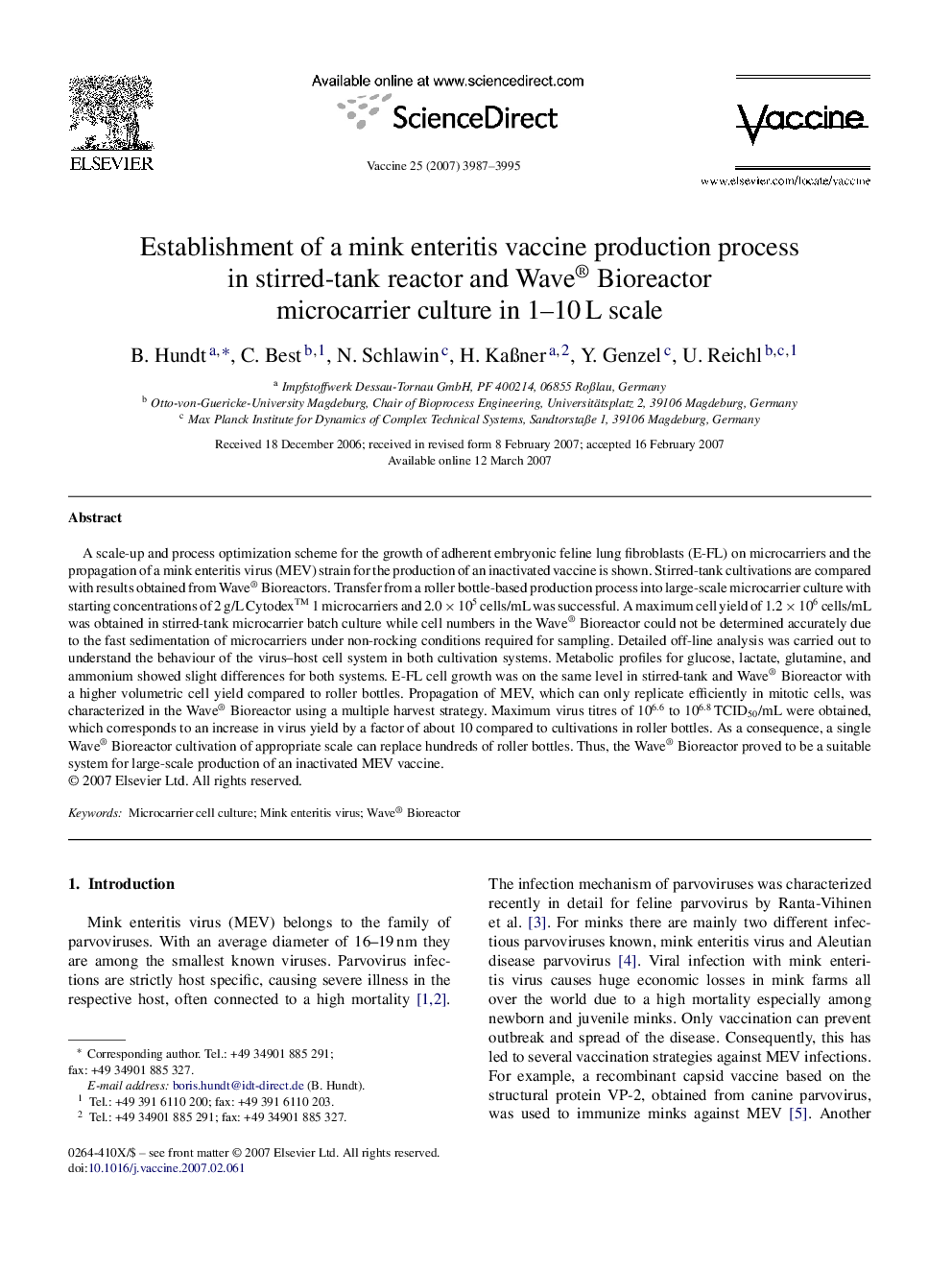| Article ID | Journal | Published Year | Pages | File Type |
|---|---|---|---|---|
| 2406904 | Vaccine | 2007 | 9 Pages |
A scale-up and process optimization scheme for the growth of adherent embryonic feline lung fibroblasts (E-FL) on microcarriers and the propagation of a mink enteritis virus (MEV) strain for the production of an inactivated vaccine is shown. Stirred-tank cultivations are compared with results obtained from Wave® Bioreactors. Transfer from a roller bottle-based production process into large-scale microcarrier culture with starting concentrations of 2 g/L Cytodex™ 1 microcarriers and 2.0 × 105 cells/mL was successful. A maximum cell yield of 1.2 × 106 cells/mL was obtained in stirred-tank microcarrier batch culture while cell numbers in the Wave® Bioreactor could not be determined accurately due to the fast sedimentation of microcarriers under non-rocking conditions required for sampling. Detailed off-line analysis was carried out to understand the behaviour of the virus–host cell system in both cultivation systems. Metabolic profiles for glucose, lactate, glutamine, and ammonium showed slight differences for both systems. E-FL cell growth was on the same level in stirred-tank and Wave® Bioreactor with a higher volumetric cell yield compared to roller bottles. Propagation of MEV, which can only replicate efficiently in mitotic cells, was characterized in the Wave® Bioreactor using a multiple harvest strategy. Maximum virus titres of 106.6 to 106.8 TCID50/mL were obtained, which corresponds to an increase in virus yield by a factor of about 10 compared to cultivations in roller bottles. As a consequence, a single Wave® Bioreactor cultivation of appropriate scale can replace hundreds of roller bottles. Thus, the Wave® Bioreactor proved to be a suitable system for large-scale production of an inactivated MEV vaccine.
